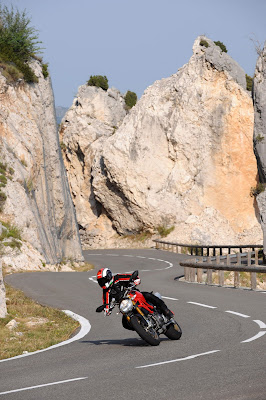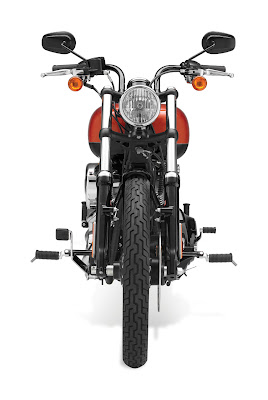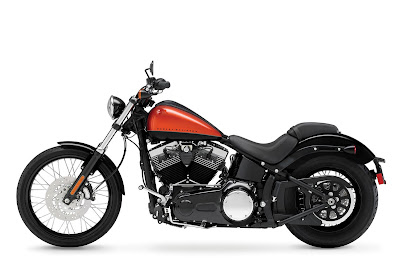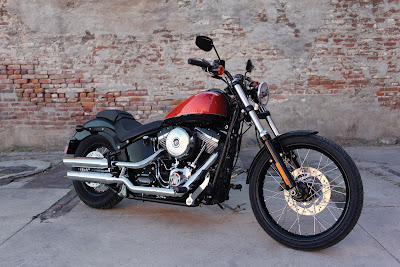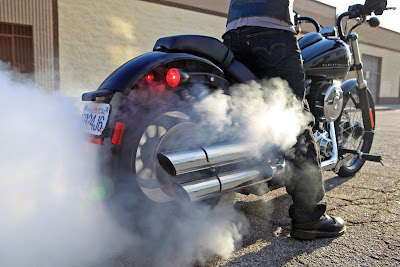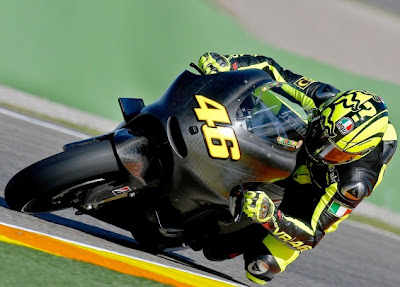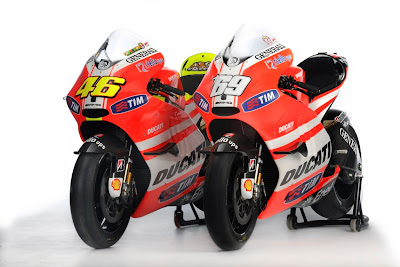2011 Kawasaki Ninja 650R
2011 Kawasaki Ninja 650R Spec :
MSRP $7,099 USD
Engine: Four-stroke, liquid-cooled, DOHC, four-valve per cylinder, alongside twin
Displacement: 649cc
Bore x stroke: 83.0 x 60.0mm
Compression ratio: 11.3:1
Cooling: Liquid
Fuel injection: Digital ammunition bang with two 38mm Keihin burke bodies
Ignition: Digital CDI
Transmission: Six-speed
Final drive: O-ring chain
Frame: Semi-double cradle, high-tensile steel
Rake / trail: 25 degrees / 4.2 in.
Wheelbase: 55.5 in.
Front abeyance / caster travel: 41mm hydraulic scope angle / 4.7 in.
Rear abeyance / caster travel: Distinct account laydown shock with adjustable bounce preload / 4.9 in.
Front tire: 120/70×17
Rear tire: 160/60×17
Front brake: Dual 300mm blade discs with two-piston calipers
Rear brake: Distinct 220mm blade disc with distinct agent caliper
Overall length: 82.7 in.
Overall width: 29.9 in.
Overall height: 47.2 in.
Seat height: 31.1 in.
Curb weight: 449.8 lbs.
Fuel capacity: 4.1 gal.
Colors: Candy Lime Green, Ebony, Metallic Island Blue
Good Times™ Protection Plan 12, 24, 36 or 48 months
Note: Specifications and appraisement are accountable to change
2011 Harley-Davidson FXS Blackline Softail Motorcycle
Ducati 1098s
Ducati 1098s: 169 mph (271 km / h)
motorcycle was produced by Manufacturer Italy, Ducati. It features Cylinder Engine L-twin, 4 valves per cylinder desmodromic and liquid cooled. This motorcycle can readh top speed of 169 mph (271 km / h). These forces Ducati 1098s 119.3 kW (160.0 bhp) @ 9750 rpm with 6 speed transmission chain.
Kawasaki Ninja 1000
2011 Kawasaki Ninja 1000 First Ride
The new Kawasaki Ninja 1000 has sportbike attitude and clarification with a real-world, comfortable, sit-up basement position. Mounting a set of bendable bags, I adapted the 3-position windshield to its accomplished ambience and took off afterwards the US columnist barrage in Mill Valley, CA and spent three added canicule benumbed about littoral California. 1000 afar later, I had a boatload of abundant pictures and a abundant consequence of the powerful, adventurous ride.
Yamaha pulls the covers off 2010 FZ8 naked sportbike
The upper-middleweight naked bike segment, which currently has entrants from the likes of BMW, Aprilia and Ducati, is about to get an good ol' injection of Japanese know-how as Yamaha readies its upcoming new FZ8 for production. Yamaha apparently sees room for a machine that splits the difference between the smaller FZ6 (and FZ6R) and the full FZ1 naked literbike.
As far as we're aware, Yamaha has confirmed neither the FZ8 nor its fully-faired FZ8R sibling for North America (we'll keep you posted), but it seems possible the models could make it Stateside if there's sufficient interest... which is why we're bringing you this initial official image of the FZ8. So, what do you think?
Judging from the photo, the FZ8 appears to be based on the current FZ1, and internet rumors suggest the 800cc mill will be a downsized version of the former R1 engine with an identical stroke and smaller bore. We'll know soon enough – the official unveiling is scheduled for March 12 – but in the meantime, enjoy the teaser.
yamaha quads, Raptor 700R
Yamaha quads Raptor 700R adalah ATV (All Terrain Vehicle) atau sepeda quad. Hal ini terutama olahraga / sepeda balap. Kecepatan dari quad ini sampai 80 MPH, tetapi secara elektronik (melalui menghambat gigi timing atas) kecepatan terbatas pada 75MPH. The Raptor 700R adalah generasi kedua dari Yamaha Raptor (gen pertama adalah Raptor 660) dan ini didukung oleh single valve 686cc 4 silinder mesin injeksi bahan bakar elektronik (sekitar 45hp), dengan memulai listrik dan pewarisan 5 kecepatan manual dengan terbalik. Raptor yang terbaik adalah pasar jual Amerika.
moto-cross
moto-cross, Olahraga yang akan meningkatkan popularitas selama 1930an, terutama di Inggris di mana kegiatan yang melibatkan tim dari berbagai kabupaten dan perusahaan akan dilaksanakan secara berkala. Bikes yang digunakan dalam kompetisi pada saat akan hampir tidak terbedakan dari yang digunakan di jalanan.
Yang diperkenalkan dalam perbaikan sepeda motor selama tahun 1960 akan membuang yang lama dan berat empat-stroke ke mesin kecil, niche acara.
Pada akhir tahun 1960, perusahaan dari Jepang akan saingan mereka di negeri Eropa manufaktur dan produksi berkualitas tinggi untuk motor motocross enthusiasts. Tahun 1980 ke tahun 1990-an
Yang diperkenalkan dalam perbaikan sepeda motor selama tahun 1960 akan membuang yang lama dan berat empat-stroke ke mesin kecil, niche acara.
Pada akhir tahun 1960, perusahaan dari Jepang akan saingan mereka di negeri Eropa manufaktur dan produksi berkualitas tinggi untuk motor motocross enthusiasts. Tahun 1980 ke tahun 1990-an
McLaren MP4-12C Sports Cars
The McLaren MP4-12C is revealed as the first in a range of high-performance sports cars from McLaren Automotive, the independent car division based at the McLaren Technology Centre in Woking, England. The 12C, and future models within the range, will challenge the world’s best sports cars, benefiting from the expertise and virtuosity of the McLaren Group.
Twenty years of sports car design, engineering and production combined with inspirational success in Formula 1 have driven Ron Dennis, McLaren Automotive Chairman, to announce his plans for the ultimate line-up of technology-led and customer-focused performance cars for the 21st century. The rules in the sports car world are about to be re-written.
Through a rich modern history, McLaren’s automotive division has already built the world’s most critically acclaimed supercar, the McLaren F1 (1993-1998) and the world’s best-selling luxury supercar, the Mercedes-Benz SLR McLaren (2003-2009). McLaren Automotive now looks to the future with a new range of revolutionary sports cars.
“It is a long-held dream of mine to launch a range of high performance sports cars that set new standards in the industry,” said Dennis.
“We began designing and building cars for aficionados of thoroughbred sports cars almost 20 years ago. Incorporating the leading edge technologies that the McLaren Group has built up within its various companies, I believe we are now perfectly placed to open up this new chapter in McLaren’s history as well as play a part in the regeneration of high-tech manufacturing in the UK and global automotive
At its heart, the McLaren MP4-12C features a revolutionary carbon fibre chassis structure, the Carbon MonoCell: the first time a car in this market segment is based around such a strong and lightweight racing car engineering solution and the first time any car has ever featured a one-piece carbon fibre structure.
This step change in sports car design means that the 12C introduces new standards not just in handling, ride and outright performance, but also safety, economy and practicality in an already competitive sector.
Martin Whitmarsh, Team Principal of McLaren’s racing team highlighted the integral part that McLaren’s motorsport and road car experience played in developing the 12C: “McLaren has for years offered a potent mix of race car and road car technologies. This combination of McLaren’s performance heritage, and future demands on what is expected of high performance sports cars in the 21st century, gave us a head-start when we embarked on this project. The 12C, and future variants, draws on the spirit of Formula 1 and delivers real-world technological advances.”
The first car from the new company, the McLaren MP4-12C, is a high performance two-seat mid-engine model in the ‘core’ sports car market segment for cars costing between £125,000 and £175,000. The 12C is pure McLaren, featuring no carryover parts from any other car, and will be produced by McLaren in the UK. It goes on sale through a dedicated, worldwide retailer network in early 2011.
“McLaren is already a car maker with maturity and experience, having produced iconic cars such as the F1,” said Antony Sheriff, McLaren Automotive Managing Director.
“The next step was to construct a range of pure McLaren high performance sports cars that are true to the company’s philosophy and reflect our position as an absolute technology and performance leader. So, when we embarked on the 12C project, we wanted to re-write the rules of sports car design. Indeed, the 12C offers performance and technology that exceeds that of the world’s most expensive and sophisticated supercars, while competing in a much more accessible market segment. And to achieve this result, we designed every component from scratch to meet the extreme goals of the 12C and avoid any compromise.”
“Forget what you know about sports car companies, McLaren is different,” he concluded.
Inside out
The heart of the new car is the Carbon MonoCell. McLaren pioneered the use of carbon composite construction in the 1981 Formula 1 MP4/1 model and set a trend that all Formula 1 teams have followed. The company brought carbon fibre to road cars for the first time with the 1993 McLaren F1 and then built on this experience with a carbon fibre chassis and body on the SLR manufactured to the same exacting standards, but in higher volumes.
So, until now, carbon chassis have remained the preserve of the most expensive exotic cars; a purchase for the super-rich where costs are driven by the complexity of carbon fibre chassis design and build.
The 12C changes this by introducing the advantages of carbon composite – light weight, high strength and torsional rigidity, and longevity – to a more affordable sector through its revolutionary engineering as a one-piece moulding. Never before has a carbon fibre chassis been produced this way.
The 12C MonoCell not only brings dynamic benefits, but also offers fundamental engineering opportunities that form the basis of the car’s unique character. It has been designed to allow a much narrower structure overall which in turn contributes to a more compact car that is easier to position on the road and more rewarding to drive.
Not only is the 12C unique in its class by offering carbon technology, it also has the highest specific power output as well as extraordinary power- and torque-to-weight ratios. Furthermore, the Proactive Chassis Control system offers groundbreaking handling and ride comfort while an intense focus on occupant packaging offers new levels of comfort and everyday usability.
Antony Sheriff explained. “With the 12C we are redefining the relationship between performance and practicality, as well as performance and efficiency, achieving leading positions in both. We have designed this car from the inside out. We have a saying in McLaren – ‘everything for a reason’ and the 12C will surprise people in many ways.
“A clear illustration of its special qualities is in the efficiency of its power delivery. With the 12C’s power output of around 600hp and its low CO2 emissions, it delivers the highest horsepower to CO2 ratio of any car on the market today with an internal combustion engine…and that includes petrol and diesel hybrids,” Sheriff concluded.
Pure McLaren
All the parts of the McLaren MP4-12C are bespoke and unique to this car. Everything from the engine right down to the tailor-made switches and buttons is pure McLaren: nothing has come from another manufacturer’s parts bin.
The 12C is powered by a bespoke McLaren ‘M838T’ 3.8 litre, V8 twin-turbo engine producing around 600bhp, driving through a McLaren seven speed Seamless Shift dual clutch gearbox (SSG). It is targeting not only new standards for power and performance in its sector, but also class-leading fuel economy and CO2 emissions; supported by McLaren’s experience of active aerodynamics to aid cooling, grip, handling and road holding.
“The 12C is all about performance,” said Sheriff. “And in McLaren, we have a very broad definition of performance. We don’t just look at the traditional one-dimensional parameters like top speed, we focus equally on useable measures such as in-gear acceleration times, braking performance in all conditions, and efficiency of power delivery combined with the lowest possible fuel consumption and CO2 emissions. Sure, 12C is very fast, but it is also the most efficient, most driveable high-performance sports car in the world.
“In the more subjective areas of road-holding, handling, comfort, driver involvement and day-to-day usability, McLaren is achieving new standards for a mid-engined high performance sports car in this sector,” he concluded.
Thorough engineering and market research led to concept development and a clear decision in favour of a mid-engined two door high performance sports car. Intensive work was carried out in the wind tunnel and the driving simulator to ensure that the new car would inherently have superb dynamic qualities.
Dick Glover, McLaren Automotive Technical Director, was closely involved with the development of these invaluable tools during his time with McLaren’s Formula 1 race team.
“There are so many examples of race car process and technology transfer in the 12C,” claimed Glover. “The car owes much to McLaren’s experience and success in motor sport. The advantage of technology transfer is only one element; speed of decision-making and development, F1 processes and people all make an important contribution.
“Brake Steer, for example, is a technology we pioneered on our Formula 1 car back in 1997. It helps to dial out understeer on entry to a corner and improves traction on the way out. Another is the Pre-Cog function on the gearshift rocker that effectively primes the gearbox ready for the next change, ensuring a more satisfying and faster gearchange. This is a high performance sports car with race car genes and teamwork at its heart.”
Adding lightness
Weight is the enemy of performance in every area of car design. It affects acceleration, speed, handling, fuel consumption and CO2 emissions – everything. McLaren Automotive engineers pursued weight saving obsessively. For example:
* The Carbon MonoCell not only reduces the weight of the structure but also allows for the use of much lighter weight body panels.
* The close position of the driver and passenger allows a narrower, lighter body while giving improved visibility with a clearer perception of the car’s extremities.
* Brakes with forged aluminium hubs save 8 kg and weigh less than optional carbon ceramic brakes.
* Lightweight exhaust pipes exit straight out the rear of the car, minimizing their length and weight.
* Airflow-assisted Airbrake deployment dramatically reduces weight of the Airbrake activation system.
* Small, compact downsized engine coupled to lightweight compact SSG minimizes vehicle length, weight and polar moment of inertia.
* Significant weight was pared off the alloy wheels through intensive Finite Element Analysis of wall thicknesses.
* The engine cooling radiators were mounted at the rear, as close to the engine as possible, to minimize the pipework, the fluids contained within them, and therefore weight. They were also mounted in car line to minimize vehicle width.
“We have spent most of the programme ‘adding lightness’,” said Mark Vinnels, McLaren Automotive Programme Director. “If the cost of reducing weight brought performance gains in speed, handling or economy, we did it. However, if the expense could deliver improved performance elsewhere we didn’t pursue it. We never set weight targets as such; we set cost-to-performance targets and examined everything in this way.
“A good example of this philosophy is that we considered carbon fibre body panels. They would have reduced weight but added little benefit as the new one-piece Carbon MonoCell provides all of the torsional strength the body needs. The costs saved were used elsewhere for greater weight reduction and efficiencies overall. This was the holistic approach to weight saving that we used all the way through development,” he concluded.
Design: everything for a reason
The McLaren MP4-12C design follows similar principles to McLaren’s Formula 1 cars, and the legendary McLaren F1, where everything is for a reason and all lines, surfaces, and details are designed with a job in mind as much as styled. This ensures that the 12C communicates its engineering through its styling and will remain timeless as a piece of automotive design.
Frank Stephenson, McLaren Automotive Design Director: “Many sports cars and super cars present an ‘in-your-face’, ‘look-at-me’ image that can become wearing and boorish; the ultimate backhanded compliment becomes, “…it was of its time”. Great design, however, is timeless and looks relevant years later. Take the McLaren F1 as an example. I hope that with the 12C we have produced a car that looks great today and will still look great in years to come.”
Twenty years of sports car design, engineering and production combined with inspirational success in Formula 1 have driven Ron Dennis, McLaren Automotive Chairman, to announce his plans for the ultimate line-up of technology-led and customer-focused performance cars for the 21st century. The rules in the sports car world are about to be re-written.
Through a rich modern history, McLaren’s automotive division has already built the world’s most critically acclaimed supercar, the McLaren F1 (1993-1998) and the world’s best-selling luxury supercar, the Mercedes-Benz SLR McLaren (2003-2009). McLaren Automotive now looks to the future with a new range of revolutionary sports cars.
“It is a long-held dream of mine to launch a range of high performance sports cars that set new standards in the industry,” said Dennis.
“We began designing and building cars for aficionados of thoroughbred sports cars almost 20 years ago. Incorporating the leading edge technologies that the McLaren Group has built up within its various companies, I believe we are now perfectly placed to open up this new chapter in McLaren’s history as well as play a part in the regeneration of high-tech manufacturing in the UK and global automotive
At its heart, the McLaren MP4-12C features a revolutionary carbon fibre chassis structure, the Carbon MonoCell: the first time a car in this market segment is based around such a strong and lightweight racing car engineering solution and the first time any car has ever featured a one-piece carbon fibre structure.
This step change in sports car design means that the 12C introduces new standards not just in handling, ride and outright performance, but also safety, economy and practicality in an already competitive sector.
Martin Whitmarsh, Team Principal of McLaren’s racing team highlighted the integral part that McLaren’s motorsport and road car experience played in developing the 12C: “McLaren has for years offered a potent mix of race car and road car technologies. This combination of McLaren’s performance heritage, and future demands on what is expected of high performance sports cars in the 21st century, gave us a head-start when we embarked on this project. The 12C, and future variants, draws on the spirit of Formula 1 and delivers real-world technological advances.”
The first car from the new company, the McLaren MP4-12C, is a high performance two-seat mid-engine model in the ‘core’ sports car market segment for cars costing between £125,000 and £175,000. The 12C is pure McLaren, featuring no carryover parts from any other car, and will be produced by McLaren in the UK. It goes on sale through a dedicated, worldwide retailer network in early 2011.
“McLaren is already a car maker with maturity and experience, having produced iconic cars such as the F1,” said Antony Sheriff, McLaren Automotive Managing Director.
“The next step was to construct a range of pure McLaren high performance sports cars that are true to the company’s philosophy and reflect our position as an absolute technology and performance leader. So, when we embarked on the 12C project, we wanted to re-write the rules of sports car design. Indeed, the 12C offers performance and technology that exceeds that of the world’s most expensive and sophisticated supercars, while competing in a much more accessible market segment. And to achieve this result, we designed every component from scratch to meet the extreme goals of the 12C and avoid any compromise.”
“Forget what you know about sports car companies, McLaren is different,” he concluded.
Inside out
The heart of the new car is the Carbon MonoCell. McLaren pioneered the use of carbon composite construction in the 1981 Formula 1 MP4/1 model and set a trend that all Formula 1 teams have followed. The company brought carbon fibre to road cars for the first time with the 1993 McLaren F1 and then built on this experience with a carbon fibre chassis and body on the SLR manufactured to the same exacting standards, but in higher volumes.
So, until now, carbon chassis have remained the preserve of the most expensive exotic cars; a purchase for the super-rich where costs are driven by the complexity of carbon fibre chassis design and build.
The 12C changes this by introducing the advantages of carbon composite – light weight, high strength and torsional rigidity, and longevity – to a more affordable sector through its revolutionary engineering as a one-piece moulding. Never before has a carbon fibre chassis been produced this way.
The 12C MonoCell not only brings dynamic benefits, but also offers fundamental engineering opportunities that form the basis of the car’s unique character. It has been designed to allow a much narrower structure overall which in turn contributes to a more compact car that is easier to position on the road and more rewarding to drive.
Not only is the 12C unique in its class by offering carbon technology, it also has the highest specific power output as well as extraordinary power- and torque-to-weight ratios. Furthermore, the Proactive Chassis Control system offers groundbreaking handling and ride comfort while an intense focus on occupant packaging offers new levels of comfort and everyday usability.
Antony Sheriff explained. “With the 12C we are redefining the relationship between performance and practicality, as well as performance and efficiency, achieving leading positions in both. We have designed this car from the inside out. We have a saying in McLaren – ‘everything for a reason’ and the 12C will surprise people in many ways.
“A clear illustration of its special qualities is in the efficiency of its power delivery. With the 12C’s power output of around 600hp and its low CO2 emissions, it delivers the highest horsepower to CO2 ratio of any car on the market today with an internal combustion engine…and that includes petrol and diesel hybrids,” Sheriff concluded.
Pure McLaren
All the parts of the McLaren MP4-12C are bespoke and unique to this car. Everything from the engine right down to the tailor-made switches and buttons is pure McLaren: nothing has come from another manufacturer’s parts bin.
The 12C is powered by a bespoke McLaren ‘M838T’ 3.8 litre, V8 twin-turbo engine producing around 600bhp, driving through a McLaren seven speed Seamless Shift dual clutch gearbox (SSG). It is targeting not only new standards for power and performance in its sector, but also class-leading fuel economy and CO2 emissions; supported by McLaren’s experience of active aerodynamics to aid cooling, grip, handling and road holding.
“The 12C is all about performance,” said Sheriff. “And in McLaren, we have a very broad definition of performance. We don’t just look at the traditional one-dimensional parameters like top speed, we focus equally on useable measures such as in-gear acceleration times, braking performance in all conditions, and efficiency of power delivery combined with the lowest possible fuel consumption and CO2 emissions. Sure, 12C is very fast, but it is also the most efficient, most driveable high-performance sports car in the world.
“In the more subjective areas of road-holding, handling, comfort, driver involvement and day-to-day usability, McLaren is achieving new standards for a mid-engined high performance sports car in this sector,” he concluded.
Thorough engineering and market research led to concept development and a clear decision in favour of a mid-engined two door high performance sports car. Intensive work was carried out in the wind tunnel and the driving simulator to ensure that the new car would inherently have superb dynamic qualities.
Dick Glover, McLaren Automotive Technical Director, was closely involved with the development of these invaluable tools during his time with McLaren’s Formula 1 race team.
“There are so many examples of race car process and technology transfer in the 12C,” claimed Glover. “The car owes much to McLaren’s experience and success in motor sport. The advantage of technology transfer is only one element; speed of decision-making and development, F1 processes and people all make an important contribution.
“Brake Steer, for example, is a technology we pioneered on our Formula 1 car back in 1997. It helps to dial out understeer on entry to a corner and improves traction on the way out. Another is the Pre-Cog function on the gearshift rocker that effectively primes the gearbox ready for the next change, ensuring a more satisfying and faster gearchange. This is a high performance sports car with race car genes and teamwork at its heart.”
Adding lightness
Weight is the enemy of performance in every area of car design. It affects acceleration, speed, handling, fuel consumption and CO2 emissions – everything. McLaren Automotive engineers pursued weight saving obsessively. For example:
* The Carbon MonoCell not only reduces the weight of the structure but also allows for the use of much lighter weight body panels.
* The close position of the driver and passenger allows a narrower, lighter body while giving improved visibility with a clearer perception of the car’s extremities.
* Brakes with forged aluminium hubs save 8 kg and weigh less than optional carbon ceramic brakes.
* Lightweight exhaust pipes exit straight out the rear of the car, minimizing their length and weight.
* Airflow-assisted Airbrake deployment dramatically reduces weight of the Airbrake activation system.
* Small, compact downsized engine coupled to lightweight compact SSG minimizes vehicle length, weight and polar moment of inertia.
* Significant weight was pared off the alloy wheels through intensive Finite Element Analysis of wall thicknesses.
* The engine cooling radiators were mounted at the rear, as close to the engine as possible, to minimize the pipework, the fluids contained within them, and therefore weight. They were also mounted in car line to minimize vehicle width.
“We have spent most of the programme ‘adding lightness’,” said Mark Vinnels, McLaren Automotive Programme Director. “If the cost of reducing weight brought performance gains in speed, handling or economy, we did it. However, if the expense could deliver improved performance elsewhere we didn’t pursue it. We never set weight targets as such; we set cost-to-performance targets and examined everything in this way.
“A good example of this philosophy is that we considered carbon fibre body panels. They would have reduced weight but added little benefit as the new one-piece Carbon MonoCell provides all of the torsional strength the body needs. The costs saved were used elsewhere for greater weight reduction and efficiencies overall. This was the holistic approach to weight saving that we used all the way through development,” he concluded.
Design: everything for a reason
The McLaren MP4-12C design follows similar principles to McLaren’s Formula 1 cars, and the legendary McLaren F1, where everything is for a reason and all lines, surfaces, and details are designed with a job in mind as much as styled. This ensures that the 12C communicates its engineering through its styling and will remain timeless as a piece of automotive design.
Frank Stephenson, McLaren Automotive Design Director: “Many sports cars and super cars present an ‘in-your-face’, ‘look-at-me’ image that can become wearing and boorish; the ultimate backhanded compliment becomes, “…it was of its time”. Great design, however, is timeless and looks relevant years later. Take the McLaren F1 as an example. I hope that with the 12C we have produced a car that looks great today and will still look great in years to come.”
Yamaha zuma
Yamaha zuma. Garpu depan memiliki 2.6 inci perjalanan, dan shock belakang memiliki 2,4 inci perjalanan. skuter juga memiliki 155mm rem cakram hidrolik depan dan belakang drum rem. (Model sampai 1998 telah drum rem depan.) styling agresif untuk membuat profil sporty untuk skuter
Panel instrumen telah sinyal giliran, balok tinggi dan lampu indikator rendah minyak. Yamaha mengambil Zuma dari pasar di Amerika Serikat pada 2006 dan 2007, dan kemudian memperkenalkan kembali model tahun 2008.
Panel instrumen telah sinyal giliran, balok tinggi dan lampu indikator rendah minyak. Yamaha mengambil Zuma dari pasar di Amerika Serikat pada 2006 dan 2007, dan kemudian memperkenalkan kembali model tahun 2008.
Yamaha pulls the covers off 2010 FZ8 naked sportbike
The upper-middleweight naked bike segment, which currently has entrants from the likes of BMW, Aprilia and Ducati, is about to get an good ol' injection of Japanese know-how as Yamaha readies its upcoming new FZ8 for production. Yamaha apparently sees room for a machine that splits the difference between the smaller FZ6 (and FZ6R) and the full FZ1 naked literbike.
As far as we're aware, Yamaha has confirmed neither the FZ8 nor its fully-faired FZ8R sibling for North America (we'll keep you posted), but it seems possible the models could make it Stateside if there's sufficient interest... which is why we're bringing you this initial official image of the FZ8. So, what do you think?
Judging from the photo, the FZ8 appears to be based on the current FZ1, and internet rumors suggest the 800cc mill will be a downsized version of the former R1 engine with an identical stroke and smaller bore. We'll know soon enough – the official unveiling is scheduled for March 12 – but in the meantime, enjoy the teaser.
BMW Motorrad Introduces C1-E Electric Scooter Concept for Safer Urban Motoring
BMW Motorrad has just introduced their new C1-E electric scooter concept as what "a safe, environment-friendly and highly practical single track vehicle for city traffic could look like in the future." Some of you may remember the C1 scooter that was available in Europe between 2000 and 2003. Offered in two trims, the 125 (124cc) and 200 (176 cc), the original C1 purported to provide a standard of accident protection that was comparable to a European compact car, with a reinforced canopy. The party line was that this thing was so safe you didn't even need a helmet. The C1 was off to the races with sales over 10,000 in 2001. However, due to very poor sales the following year, production ceased in 2002 as market demand cooled.
The BMW C1-E Concept, like it's predecessor, features a fully-enclosed cabin with built-in rollover protection, a front-end impact zone, a four-point safety belt and a low center of gravity. In the years since the C1 was released, BMW Motorrad has advanced a host of electronic aids such as integrated ABS, Traction Control, Tire Pressure Control and Anti-Slip Control. BMW is even toying with the idea of "forward-looking rider assistance systems" that help with cross-traffic and traffic light guidance as well as warning alerts for road hazards, emergency vehicles, sudden braking or advancing bad weather.
Not only is the BMW C1-E Concept remarkably safe but it is environmentally friendly as well as with zero emissions. BMW pulled technology from now defunct scooter manufacturer Vectrix to provide the powertrain components including the electric motor. An advanced lithium-ion battery pack is used to provide substantial energy storage. The C1-E Concept is also flexible enough to support an efficient, low-emissions gasoline engine.
The BMW C1-E Concept came about due to the company's participation in eSUM (European Safer Urban Motoring) which is a collaborative project between large municipalities and motorcycle manufacturers. Unfortunately, the C1-E is not currently slated for production. However, many of the advances that come out of this study will undoubtedly make their way into future single track vehicles. That said, it does look like the C1-E is pretty production ready so who knows...
Source: BMW
Tokyo 2011: Yamaha Super Tenere doesn't panic, always knows where its towel is
Yamaha Super Tenere Concept - Click above for high-res image gallery
Yamaha looks to have channeled a bit of BMW with the Super Tenere concept bike that's currently being displayed at the Tokyo Motor Show. Like the Bavarian automaker's Gina concept, the Super Tenere eschews traditional bodywork for a fabric covering supported by some kind of internal skeletal structure. Naturally, the expected production version for next year will come equipped with real bodywork and a fully functional engine... at least we'd hope so.
That future production model will come equipped with a 1200cc parallel-twin powerplant and will do battle with BMW's range of off-road-ready GS bikes. Check out the goods in our photo gallery below, live from Tokyo.
Subscribe to:
Comments (Atom)


